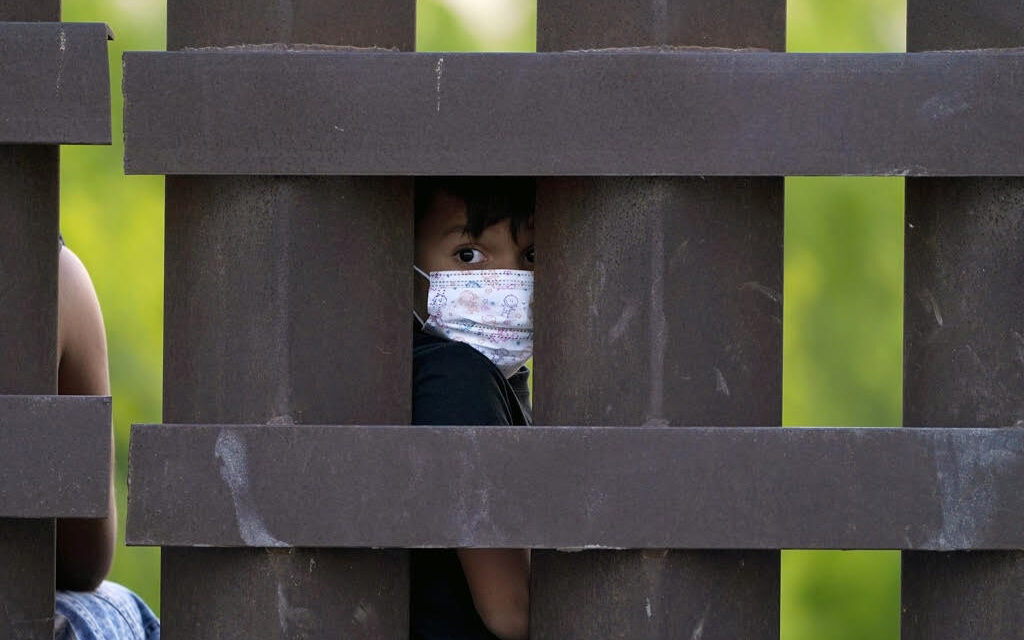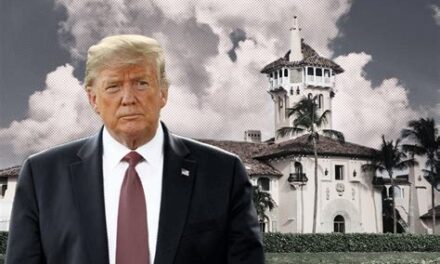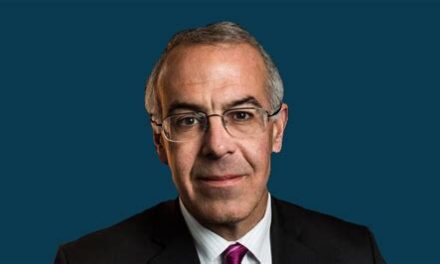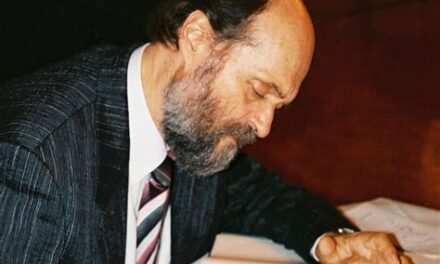Sound of Freedom has topped $150,000,000 in box office take while dramatically calling attention to the horrific trafficking of children across international borders. Given the gravity of this evil and our own gross mishandling of priests who preyed on children, the United States Conference of Catholic Bishops (USCCB) should welcome this opportunity to reassure the faithful that its border policies and Unaccompanied Alien Children (UAC) program fully protect children from exploitation. I reached out to the USCCB hoping to find model programs, transparency and guarantees that the Catholic Church has protected migrant children from sexual and physical exploitation. Have any of the children cared for by the Church suffered exploitation in their journey to the border or in placements facilitated by the Catholic Church, I asked. The USCCB refused to respond.
The USCCB’s lack of transparency is unacceptable. Mounting evidence has exposed gross exploitation of children at the border and in placements pursuant to the authority of the Office of Refugee Resettlement (“ORR”). The USCCB remains the primary institutional voice opposing border restrictions, while also contracting with ORR to provide care to unaccompanied children. In 2020 and 2021, the USCCB had contracts for nearly $25,000,000 each year with the ORR to care for and place migrant children. What happened to these children and why won’t the USCCB discuss it?
The USCCB must urgently re-assess its border policy and its denial of a link between open borders and child exploitation. It must address emerging evidence of the exploitation of unaccompanied children by smugglers and sponsors. More than any other institution, the US Catholic Church should have the protection of children as its major policy priority. This priority coincides with Church teaching on the protection of children, the special expertise the Church has developed in response to its sexual abuse scandal and the reality that another wave of lawsuits for enabling the exploitation of children will destroy the Catholic Church in America.
- USCCB’s unrestricted border policy and its policy priority of “the dignity of the illegal migrant.”
In 2000, the USCCB published Welcoming the Stranger Among Us: Unity in Diversity. Without distinguishing immigrants based upon means of entry into the United States, the Bishops instructed that: “The call to communion goes out to all members of the Church—bishops, priests, deacons, religious, lay leaders, and parishioners—to prepare themselves to receive the newcomers with a genuine spirit of welcome”. The Bishops underscored that Catholics’ warm welcome extend to any person illegally crossing the southern border, stating:
Without condoning undocumented migration, the Church supports the human rights of all people and offers them pastoral care, education, and social services, no matter what the circumstances of entry into this country, and it works for the respect of the human dignity of all—especially those who find themselves in desperate circumstances.
Remarkably, and reminiscent of the blind eye Catholic Bishops turned to pedophilia in their midst, Welcoming the Stranger disregards the victims of uncontrolled entry by characterizing illegal entrants as desperate, fleeing from persecution, starvation, or grave threat to their lives. Children sold to, captured or manipulated by smugglers and traffickers – actual victims of ongoing crimes against children – found no room in their analysis of church teaching.
The bishops disregard of border evils in Welcoming the Stranger is historically notable. As they promulgated their border policy in 2000, the Boston Globe was investigating the astonishing cover up of sexual abuse of minors in the United States Catholic Church. First appearing in print on January 6, 2002, the Spotlight expose would permanently change the reputation, finances, and credibility of the Catholic Church. Later that same year, the bishops met in Dallas, Texas to commit themselves to “to rid the Church of the scourge of the sexual abuse of minors.” Yet, this scourge, known in 2000 to be of grave concern at the border, was not mentioned in Welcoming the Stranger. Whether willing naivete or intentional omission, the bishops set in place in 2000 a policy prerogative of welcoming presumptively “desperate” illegal migrants over a policy of protecting children from exploitation.
In the same year the bishops formulated their social teaching on “welcoming” illegal entrants on the southern border, Congress passed Victims of Trafficking and Violence Protection Act of 2000; a reaction to the reality that “Trafficking in persons (TIP) for the purposes of exploitation is believed to be one of the most prolific areas of contemporary international criminal activity and is of significant interest to the United States and the international community as a serious human rights concern.”
Indeed, by 2003 one of these harms – child sex trafficking – had grown at such an alarming pace that “the Department of Homeland Security /U.S. Immigration and Customs Enforcement (ICE) developed Operation Predator, an initiative to identify, investigate and arrest child predators. Officially launched by Homeland Security Secretary Tom Ridge in July 2004, Operation Predator [drew] on ICE’s unique investigative and enforcement authorities to safeguard children from foreign national pedophiles, human traffickers, international sex tourists, and other predatory criminals.” Operation Predator became annual; the operation this year, Operation Cross Country XIII, netted “59 victims of child sex trafficking and sexual exploitation, and located 59 missing children.” One hundred twenty-five suspected traffickers/users were identified and/or arrested.
Despite its own horrific abuse crisis and the reality of child trafficking across the southern border, the bishops issued a second immigration statement in 2003, extending their policy prerogative of welcoming illegal migrants. In Strangers No Longer: Together on the Journey of Hope, the American and Mexican bishops urged their governments to address drug and human trafficking but ignored the relationship between such evils and uncontrolled borders. Indeed, the bishops argued that border barriers designed to keep out the illegal migrant forced dangerous entry paths led by human smugglers – and ignored reports, such as that generated by Operation Predator in 2003 and portrayed in Sound of Freedom, that controlled borders provide an important point of contact to intercede in child sex trafficking and abuse.
Human Smuggling & Trafficking of Children
The criminal networks engaged in human smuggling and trafficking have become more violent and more profit-driven than ever before. At the same time, some of their victims are getting younger and younger. In one case, a predator tried to purchase nine-to-eleven year old girls from Mexico. ICE agents arrested the individual when he traveled to Arizona to have sex with the girls.
The Bishops relied on upon their theology of “welcoming” to support a porous border – restrictions presumably viewed as “unwelcoming.” The Bishops objected to “initiatives [such as] . . . tripling of Border Patrol agents, especially at ports of entry, and the use of sophisticated technology such as ground sensors, surveillance cameras, heat-detecting scopes, and reinforced fencing.” That such measures might, in fact, deter or detect individuals trafficking children, the bishops ignored. In fact, in Welcome the Stranger, the bishops dismissed a nation’s “right to control its borders” as secondary to the “ more compelling claim” of the human person illegally crossing the border. The rights of children to be protected from trafficking and exploitation at the border were not included in the Bishops’ balancing of interests.
Aware of criticism that its policy prerogative welcoming illegal migrants enables and encourages illegal entry, the USCCB asserts in a FAQ sheet provided to me that “there is no evidence or research to support the claim that the humanitarian and religious services provided by Catholic organizations incentivize unlawful migration.” The USCCB asserts that a child’s decision to migrate illegally arises from a “complex set of push-pull factors.” The USCCB fails to take account of evidence that traffickers and smugglers force, entice and trick children – and the families who abandon these children – into illegal migration. That these trafficking schemes anticipate that the Church will welcome and care for the children until they are placed with “sponsors” is apparently ignored by the Church, though, as discussed below, it is documented that many such “sponsors” anticipate the arrival of these children to exploit.
Welcoming the Stranger positioned the Church as the predominant voice in the United States objecting to entry impediments or barriers at the southern border – a policy in which it has heavily invested by ignoring dangerous abuses of the porous border and accepting responsibility for the fate of children illegally entering the country.
- The Church’s Legal Responsibility for the Fate of Unaccompanied Minors – and its Lack of Transparency
Consistent with USCCB policy, Catholics along the southern border and beyond have welcomed thousands of unaccompanied minors over the last decade. Unaccompanied minors have literally poured into the country, many aided by human smugglers paid to assist their entry. In 2022, for example, the New York Times reported that “the number of unaccompanied minors entering the United States climbed to a high of 130,000 . . . – three times what it was five years earlier.”
While the number of unaccompanied minors has radically increased, the Church has remained doggedly opposed to border barriers or other deterrents to the pathways, many exploitative, along which children are ushered to then cross the southern border alone. Instead, the Church has long sought and received large government grants to assist in the welcome and settlement of illegal migrants, with a special focus on unaccompanied minors.
As Bishop Mark Seitz of the diocese of El Paso, Texas testified on June 23, 2014 before the House Judiciary Committee:
USCCB has been a leader in the protection of and advocacy for this vulnerable population and the institutional Catholic Church in the United States has played a critical role in the care of unaccompanied children. By virtue of our organizational structure and geographical reach, the U.S. Catholic Church early on has assumed a strong leadership role in the treatment and service of unaccompanied children. Since 1994, USCCB has operated the Unaccompanied Alien Children or “Safe Passages” Family Reunification program.
The USCCB has received millions of dollars from the government specifically restricted to the “Unaccompanied Alien Children Program.” Grants in 2020 totaled $24,768,292; and $24,810,621 in 2021. These grants make possible an extensive domestic Catholic network to facilitate the transport and release of children to “sponsors” throughout the United States. For a certain category of children, these sponsors may be completely unrelated adults who have requested one or more children.
While the ORR reports the numbers of unaccompanied minors released to “sponsors,” the USCCB refuses to provide such information, creating a hauntingly familiar lack of transparency. In 2022, for example, of the 127,477 unaccompanied migrant children illegally crossing the southern border and resettled with sponsors, we have no information whether the USCCB resettled 1000 or 100,000 of these children – and whether the USCCB has tracked any of them to ensure against abuses reported by whistleblowers and the New York Times, and detailed below.
Similarly, while the ORR publishes an Unaccompanied Children Program Policy Guideline, the USCCB offers no such published information, nor any non-anecdotal cumulative data regarding outcomes for these children entrusted to the Church’s care. In the absence of such critical information, the faithful simply does not know whether the thousands of children resettled with sponsors by the Catholic Church are in safe environments, or whether they are among the children identified by the New York Times and New York Post as victims, or potential victims, of exploitation.
Questions abound. How many such children has the USCCB assumed responsibility for? How does the USCCB ensure that these children are not exploited? What process does the USCCB use to track these children and monitor outcomes? What process does the USCCB follow to determine which children are being trafficked into the United States? Have any of these children sought recourse against the Church for negligence or abuse? These and many more questions hover ominously unanswered.
With a policy that opposes border barriers and controlled entry, disregards evidence of child trafficking and smuggling, and refuses to disclose data and outcomes for children resettled pursuant to government contracts, it is critical that the USCCB re-assess – transparently and competently – the harm caused to children by the Church’s current prioritizing of the dignity of the illegal migrant over the protection of children. The USCCB must avoid even the appearance of cover-up and directly address the evidence of child exploitation.
- Exploitation of Unaccompanied Minors
On April 26 of this year, the House Judiciary Subcommittee on Immigration Integrity, Security, and Enforcement held a hearing to “examine the unprecedented surge of unaccompanied alien children at the southwest border and how open-border policies enable the exploitation of those children.” The surge of illegally entering unaccompanied minors requiring placement with “sponsors” is staggering: from 15,381 in 2020, to 122,731 in 2021 and 128,904 in 2022. The total number of unaccompanied minors released to sponsors for placement in 2023 is on track to exceed these figures.
Whistleblower Tara Lee Rodas testified to the committee of the atrocities she personally witnessed as an employee of the Office of Refugee Resettlement (“ORR”):
I’ve sat with Case Managers as they cried retelling horrific things that were done to children on the journey. I saw apartment buildings where 20, 30 & 40 unaccompanied children have been released. I saw sponsors trying to simultaneously sponsor children from multiple ORR sites. I saw sponsors using multiple addresses to obtain sponsorships of children. I saw numerous cases of children in debt bondage and the child knew they had to stay with the sponsor until the debt was paid.
She advised the committee that she came forward because the “US Government has become the middleman in a large scale, multi-billion-dollar, child trafficking operation run by bad actors seeking to profit off the lives of children.”
Sheena Rodriguez added similar observations.
I also met teenage boys between the ages of 14 to 17, who claimed cartel operatives often transported children through Mexico and held them at bodegas or warehouses where armed cartel members stood guard. Many were told they were going to stay with sponsors in America, with several claims that the teens had never met or personally communicated with their supposed sponsors.
Confirming these eyewitness accounts, expert Jessica Vaughan of the Center for Immigration Studies detailed the known abuses to children by the open border policy.
Several major investigative reports conducted by branches of the U.S. government and news media outlets have documented how U.S. policies and practices have facilitated not only this mass migration episode, but also the resulting exploitation and abuse of the participants, which has been present since the onset of this episode. These studies and reports have exposed numerous incidents of abuse, fraud, and trafficking for the purposes of commercial sex and forced labor.
In scathing conclusion, doubtlessly referring to the Catholic Church, Ms. Vaughan condemned the policies which have enabled the wide scale exploitation of children.
The Biden administration has implemented policies that incentivize the illegal entry of unaccompanied alien children on a massive scale, to the profit of criminal smugglers and traffickers, even with full knowledge of the risks that such policies will endanger the safety and well-being of the migrant children. Some supporters of these policies have defended them on the belief that they are aiding the reunification of families, providing a safe haven from difficult living environments in their home countries, and even benefiting US employers. On the contrary, I submit that there is no possible rationalization for policies that have facilitated the abuse and exploitation of child migrants on such a large scale for so many years. There is no possible humanitarian or economic motive that could justify or make up for the damage that has been done to the victims by the smugglers, traffickers, abusive sponsors, and even family members who participated in these dreadful arrangements.
On February 23, 2023, the New York Times published an explosive expose, Alone and Exploited, Migrant Children Work Brutal Jobs Across the U.S., reporting the results of an extensive investigation of the fate of unaccompanied minors placed with “sponsors.” Based upon interviews with over 100 children in 20 states, reporter Hannah Drier concluded that unaccompanied minors placed with “sponsors” are “ending up in dangerous jobs that violate child labor laws — including in factories that make products for well-known brands like Cheetos and Fruit of the Loom.” The fate of these children remains undetected, as children become invisible to the systems which facilitated their illegal entry. “While H.H.S. checks on all minors by calling them a month after they begin living with their sponsors, data obtained by The Times showed that over the last two years, the agency could not reach more than 85,000 children. Overall, the agency lost immediate contact with a third of migrant children.”
Tim Ballard, the true life character played by Jim Cavaziel in Sound of Freedom, has warned of these abuses for years. Certainly the Bishops are aware. My inquiry whether and how the Church has insulated its own work for the ORR from these reports was refused. It remains my hope that, despite refusing my request for an interview on these questions, the USCCB will recognize that its history alone with child exploitation mandates transparency on this program and the fate of these children.
- The Church’s Social Teaching on Illegal Migrants Must Make Protection of Minors a Priority
No institution in the United States knows better the consequences of turning a blind eye to the reality of child exploitation and sexual abuse than the Roman Catholic Church. With over 5,000 ordained priests credibly accused of sexual abuse of thousands of children, victim lawsuits, diocesan bankruptcies and deep-dive state investigations continue.
Over 25 dioceses have declared bankruptcy in the last decade, each laden with multi-million dollar settlements for victims of pedophile priests whose bishops attempted to “avoid scandal” by ignoring canon and criminal law and, often, by relocating the disordered priest to a new diocese. Most recently, San Francisco archdiocese and San Diego have signaled plans to use a bankruptcy filing to manage child sexual abuse claims, joining other dioceses such as Portland, New Orleans, Buffalo, Minneapolis, and Wilmington.
Critically, the Church’s response to this gruesome travesty against the most innocent has included substantive changes in canon law which both mandate reporting, canonical processing of offenders and transparency. The U.S. Catholic Church has become a leader in safe environment training and implementation. These lessons must be extended to analyze and re-evaluate both border policy and the Church’s care of unaccompanied minors. The protection of children must be established within all USCCB policy and projects as a priority – so that the Church does not repeat patterns of harm to children in blind pursuit of other objectives, such as avoiding scandal or treating migrants with dignity.
That USCCB vocally acknowledges the abhorrence of child sex trafficking and supports anti-trafficking efforts offers no excuse for ignoring consequential harms of its own immigration policies and avoiding its responsibilities both to child border victims and to children under its Unaccompanied Alien Children Program. The USCCB must draw on its hard-learned lessons and extend the protection of children as its priority in immigration policy and programming. I urge the Conference to begin with transparent accounting for illegal migrant children who have passed through the Church’s care.















Marjorie,
As a practicing Catholic and former diocesan Catholic Charities employee who exhausted myself for the care of the poor, I ask you to continue to hold the USCCB’s feet to the fire to be accountable for their policies. I care about the Church and the care of these children as well as the current administration’s policies that foster these conditions and enable the abuses.